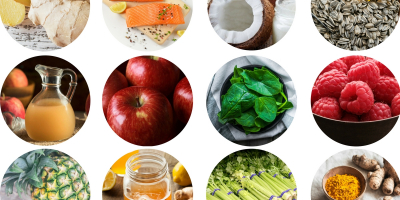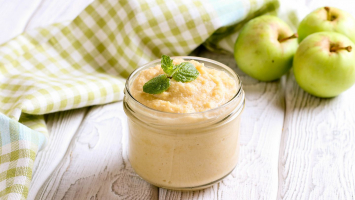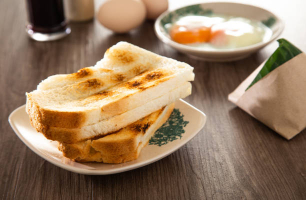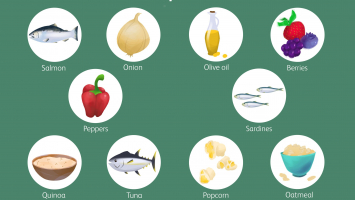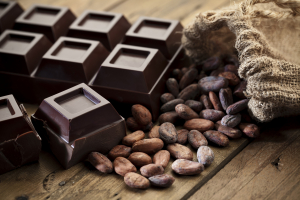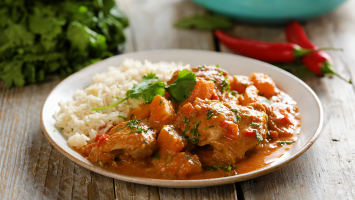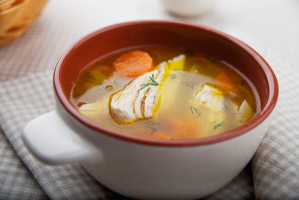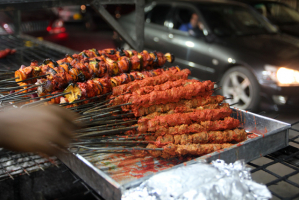Top 13 Best Foods and Drinks to Try in Provence, France
In Provence, nobody ever goes hungry after a meal. The extended growing season and extensive coastline in this bright and lush region of France ensure a ... read more...cuisine full of fresh fish and produce. The region of Provence is known for producing exceptional red, white, and rosé wines as well as regional spirits. The historic olive groves, medicinal plants, and seasonal gardens that grow close to the wineries supply the vibrant assortment of fresh produce that fills Provence's renowned markets. And below are the best foods and drinks to try in Provence, France.
-
Although rosé wine is becoming more popular, it is not a fad. In truth, pink wine has been a staple of the culture in Provence since the Greeks established vineyards there about 2,600 years ago. Even the world's only rosé-focused research facility, the Centre de Recherche et d'Expérimentation sur le Vin Rosé, is located in Provence. Nine out of ten French wine drinkers appreciate various types of rosé, according to Vins de Provence, an association that represents the region's wine producers, and wine lovers worldwide appear to concur. In 2020, Provence exported more than 60 million bottles of rosé, with 40% of those bottles going to the United States.
Visitors to Provence have the opportunity to sample wines that aren't imported to the US, many of which are produced by small, family-run businesses employing eco-friendly practices. Discover many appellations, with Côtes de Provence being the largest and offering four separate terroir designations. Although some regions of the South of France are Provence culturally, they produce Rhône Valley wines, such as the well-known cru Châteauneuf-du-Pape. Even though this can occasionally be difficult to understand, it's all part of learning about this interesting area. Rosé from Provence is constantly fascinating due to the precise production and terroir characteristics and goes well with the fresh produce, fish, and olive oil found there.
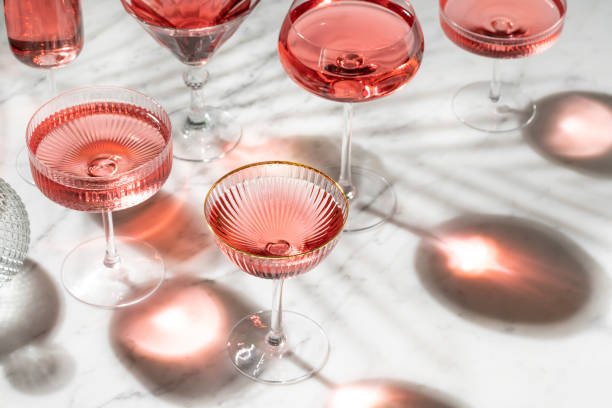
Rosé wine 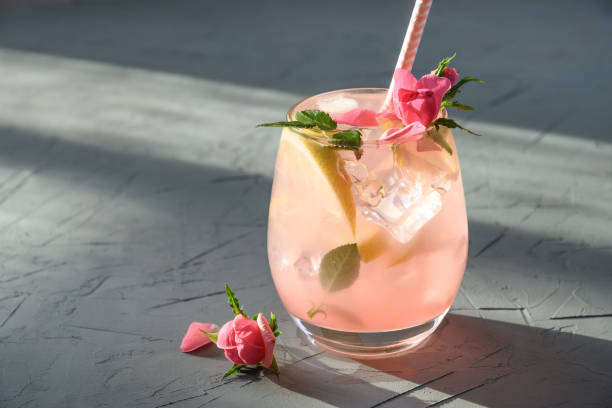
Rosé wine -
According to Vins de Provence, rosé makes up about 90% of the wine produced in Provence. Rosés are often created from red-skinned grapes that have been directly pressed, giving the juice a very brief period of skin contact that gives it the famously stunning pink hue. However, when given additional time in touch with the skins, some of these grapes are committed to generating different kinds of red wine, creating the flavor, color, and tannic profile of a traditional vin rouge.
The predominant red wine grapes in Provence, though this varies by appellation, include grenache noir, cinsault, syrah, mourvèdre, tibouren, and counoise; other grapes like cabernet sauvignon and carignan are also employed. Despite the possibility of single-varietal bottles, many of the red wines from Provence are mixes. Provençal red wines tend to be strong and full-bodied, however, there are obviously many other ways they can be presented, thanks to the abundant sunshine and a lengthy growing season. These wines pair well with foods that have been flame-grilled and aged cheeses.
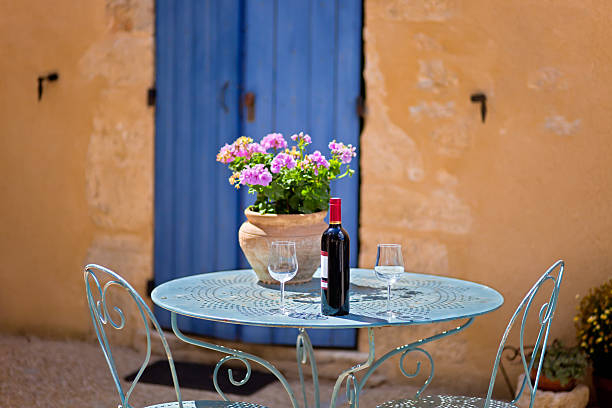
Provence's red wine 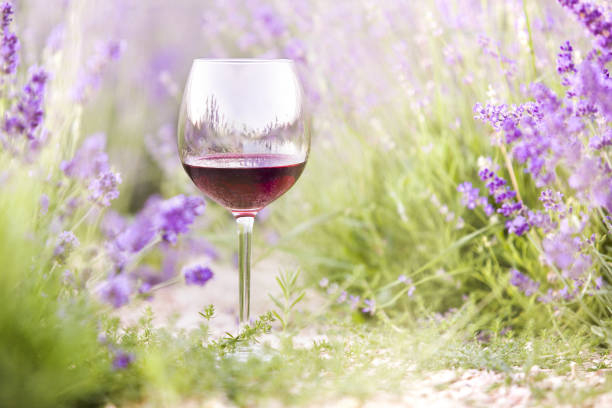
Provence's red wine -
Similar to how some Provence wine is white, just a small fraction is. According to Vins de Provence, even though this represents less than 5% of total output, some consider these wines to be some of the best from the area. Some of the coastal whites with saline undertones, like those from Cassis, a fishing community close to the steep cliffs and azure waters of Les Calanques, a protected natural park, are particularly admired. Each appellation produces white wines with flavors ranging from floral to herbal to salty.
Clarette, grenache blanc, sémillon, ugni blanc, rolle (also known as vermentino), bourboulenc, sauvignon blanc, and other varieties are used to make Provençal white wine. These wines go nicely with shellfish, salads, fresh and fried seafood, as well as many traditional Provence foods. Some predict that white wines from Provence will become more popular, satisfying the global demand for mineral-driven, fresh wines to combine with food or enjoy as an aperitif. These wines have a great reputation but are difficult to find.
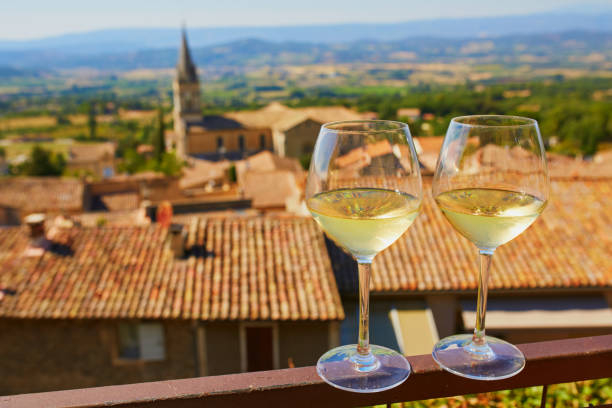
White wines 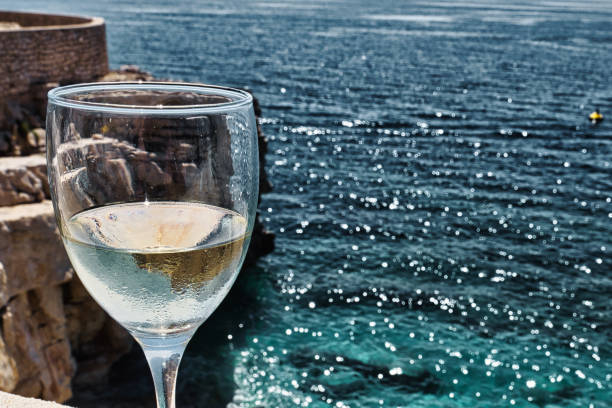
White wines -
Aoli combines the traditional Provençal flavors of olive oil and garlic to create a condiment that is similar to mayonnaise but significantly superior to conventional mayonnaise. Like in the recipe for garlic aioli, other components include lemon, eggs, salt, and pepper. As long as it complements the creamy, garlicky flavor of aioli, this is one of the most adaptable flavors for nearly everything, including cooked or raw vegetables, shrimp, potatoes, French fries, poultry, and more.
Le Grand Aioli or aioli monstre, a fresh and seasonally appropriate main dish (think charcuterie board-style) is frequently served with vegetables, fish, or shrimp in Provence. This dish typically appears on restaurant menus on Fridays, in accordance with the religious custom of forgoing meat on that day, according to Perfectly Provence. The traditional accompaniments to this light feast include radishes, endive, artichokes, boiled eggs, baguettes, green beans, and new potatoes, among others.
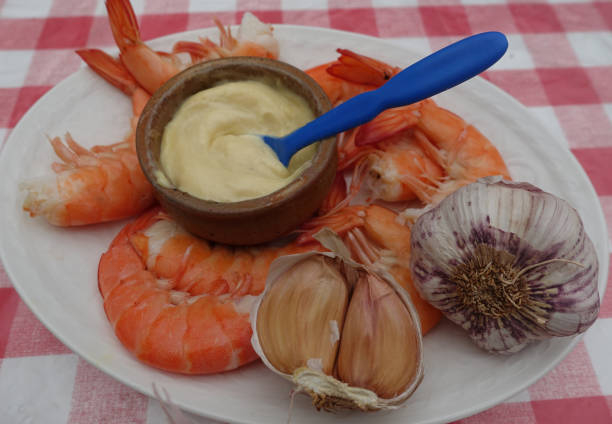
aïoli 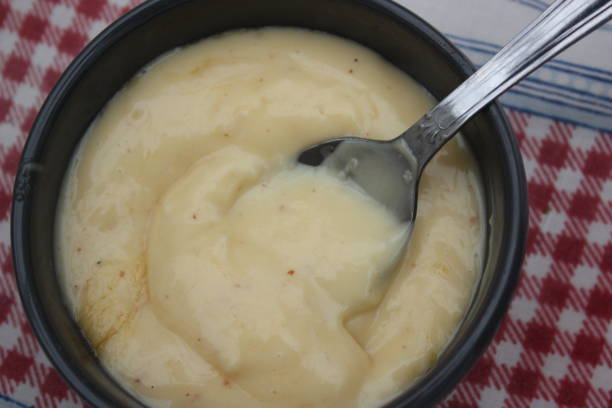
aïoli -
The second-largest city in France, Marseille, is situated in the Provence area on the Mediterranean coast and is known for its fish stew known as bouillabaisse. Since it was established by the Greeks more than 2,500 years ago, this location has seen the arrival and departure of people and things. The fishmongers supply the freshest seafood of the hour to restaurants, markets, and locals in the Vieux-Port (Old Port), which is the center of trade and transport.
Recipes for bouillabaisse, a stew currently served in local variations all over the world, pay homage to the Marseilles seaside eating tradition. It begins with a mixture of langoustine, mussels, and white fish. Many cuisine-driven variants use a soup base comprised of carrots, fennel, saffron, tomatoes, celery, garlic, and onions. Aromatic Provençal herbs and spices are traditional. It can be delivered to the table in numerous dishes, with the broth served separately from the cooked fish, or it can be presented in a single, steaming bowl.
To feed fishers and their families, the original was made from bony fish that couldn't be sold on the market. Instead, it was thrown together in a soup. According to Le Rhul Restaurant, a renowned Bouillabaisse restaurant in Marseille, native species such as scorpionfish, spider, fielas, and capon as well as monkfish, lobster, and galinette can be introduced. Local producers created the Bouillabaisse Charter in the 1980s under the direction of Le Rhul Restaurant to protect the tradition and standardize preparation and presentation.
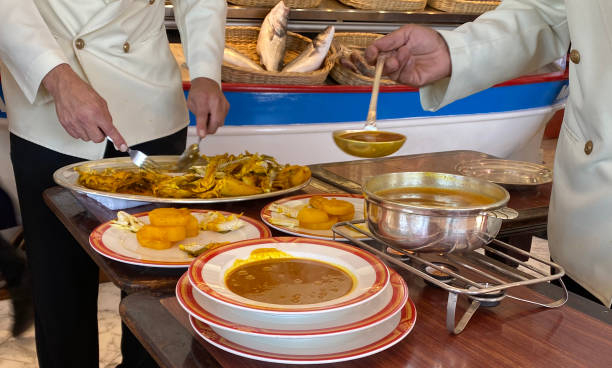
Sample bouillabaisse in Marseille 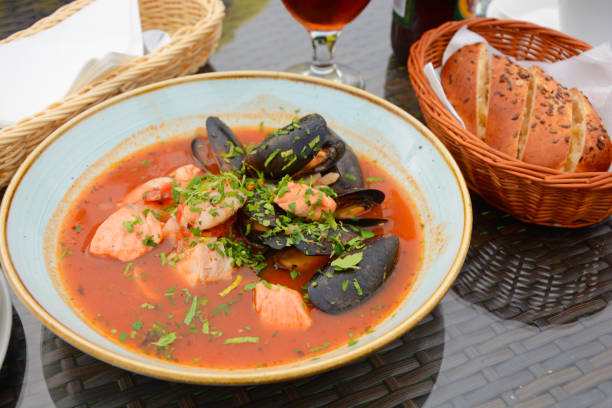
Sample bouillabaisse in Marseille -
Banon cheese, like many French food items, gets its name from the little Provençal hill village where it was first produced—a place where wild goats once grazed. In order to maintain the tradition of this product, Banon cheese has its own protected appellation (AOC or appellation d'origine contrôlée). This ensures that consumers receive genuine cheese created at its source with the necessary gourmet know-how (through AOC Banon). This includes 179 towns in the Alpes-de-Haute-Provence, Hautes-Alpes, Vaucluse, and Drôme departments, which surround Banon.
The tradition behind this cheese dates back to the farmers who looked after the cattle in Banon's grasslands and wrapped and stored it so that it could be consumed all year round rather than just when the milk was fresh. Since it is typically wrapped in chestnut leaves and fastened with a strand of raffia, this cheese is also known as Banon à la feuille, which translates to Banon in a leaf. A semi-bloomy crust surrounds a round, unpasteurized goat's milk cheese with a pleasant curd inside. It has a smooth, creamy, and strong flavor.
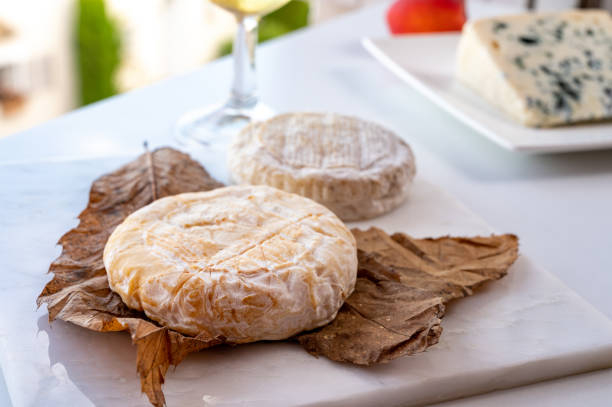
Banon cheese 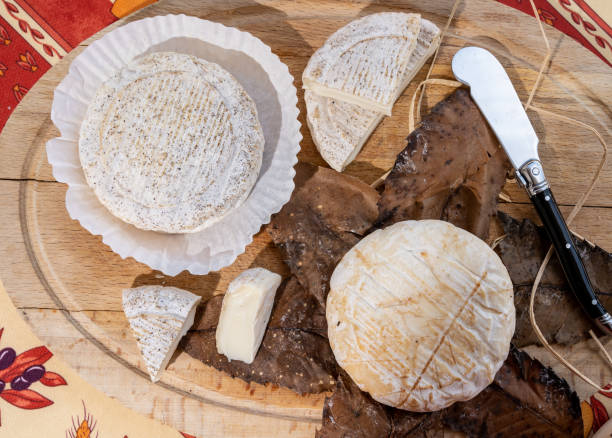
Banon cheese -
The way that most Americans think of nougat is as the textured, sweet, and hidden center of a candy bar like Three Musketeers, but nougat from Provence is a whole different story. It is a dessert that is made with whisked egg, honey or sugar, and chopped nuts (usually almonds or dried fruit) (via Provence Holidays). Depending on how it is cooked, this can be created in either a white or a black form. During the Christmas custom of Le Gros Souper, where 13 dessert delicacies are presented as part of an evening-long supper, the Provençal form of nougat is served.
Even a museum dedicated to nougat exists in Montélimar, and it is housed in the original Arnaud Soubeyran manufacturing building. The store sells traditional items like white and black nougat with lavender honey and almonds from the area. Additionally, almonds, pistachios, candied oranges, and honey are included in the special festive nougat.
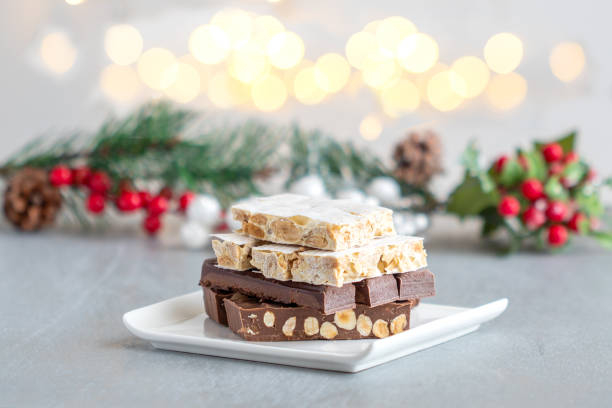
Enjoy nougat, a sweet treat from Côte d'Azur 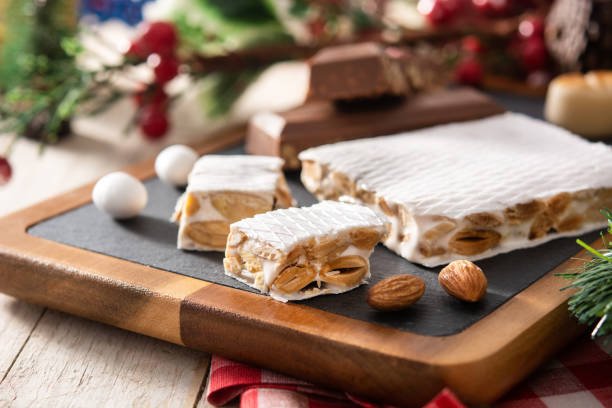
Enjoy nougat, a sweet treat from Côte d'Azur -
The Mediterranean region has a long history of producing olives, and the Romans encouraged their planting when they colonized Provence and the neighboring areas. The world-famous Savon de Marseille, a pure soap that is produced and sold with strict ties to its tradition, must contain olive oil in addition to being used for culinary purposes.
But for many, the historic Provence olive orchards are only associated with one thing: olive oil. The "star of Southern French gastronomy", according to the French Tourist Board in the US, is olive oil. Like wine, cheese, and other food goods, some olive oil has an origin certificate that indicates how and where it was produced. There are three AOCs and two AOPs in Provence, which allow olive oil made there to carry the name of the region it originates from, such as Des Baux de Provence. As a result, the olive oils from these areas have unique flavors and smells that range from vegetal to fruity and are each distinctive in their own way.
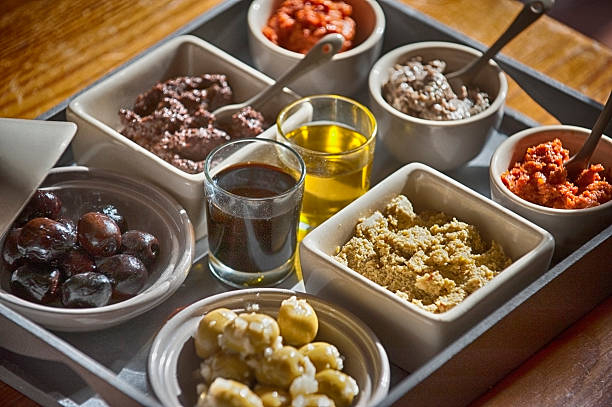
Provençal olive oil 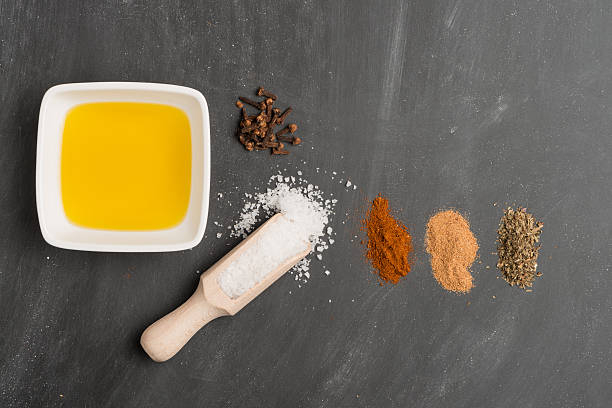
Provençal olive oil -
Pastis is a local aperitif that is both a cultural experience and a must-try before a meal in Provence. It is a 40–45% alcohol beverage with an aniseed flavor that is served with a small amount of chilled water or ice. Pastis and water combine in the glass to create a classic, extremely aromatic light yellow tint. Pastis is typically linked with lazy days in the shade, sometimes following a round of the Provençal boules game pétanque. The roots, though, are less calming.
Wine supply was significantly less than demand when the phylloxera disease decimated French vineyards in the middle of the 1800s. Despite the stories of hallucinations, people turned to absinthe, a liqueur with wormwood and anise that is heavily alcohol-based and frequently associated with bad behavior. It ultimately became illegal, along with other alcoholic beverages. Paul Ricard from Marseille came up with a substitute after noticing a gap in the market. Even though his botanical liqueur had a reduced alcohol content, it nevertheless had a distinct anise and licorice flavor character. Ricard and Pernod, both produced by the same corporation, Pernod Ricard, continue to dominate the pastis market despite an increase in artisanal manufacturing.
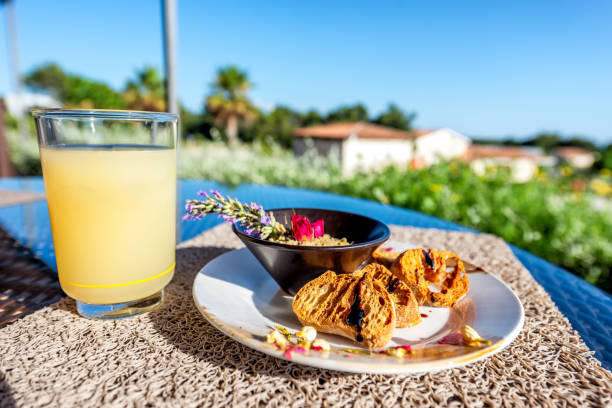
Drink a Pastis 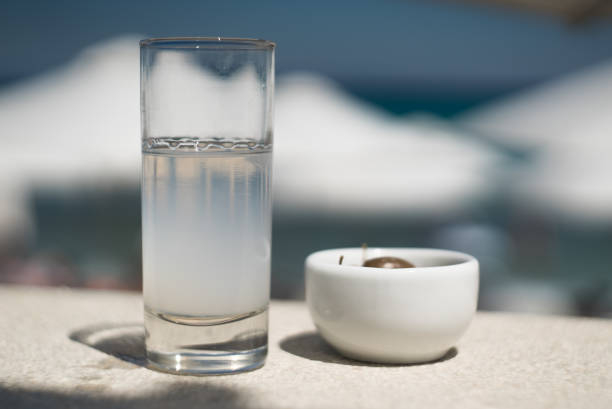
Drink a Pastis -
Having a picnic in Provence with a fresh, crusty baguette from the market and a few delectable toppings to spread on each piece is one of the nicest pleasures. The French anchovy dip known as anchoade and olive tapenade are two of the best "dips" for bread. Both contain garlic, olive oil, and seasonings and are flavorful and astringent. In addition to being delicious as an appetizer, they can also be served with vegetable or fish dishes to provide a particularly Mediterranean touch.
Basic tapenade recipes involve blending olives and other flavors until the desired consistency is achieved. Similar to tinned anchovies, which are chopped and combined with the other ingredients to make anchoade, it contains a similar quantity of umami. Both spreads are delicious, salty, and ridiculously simple to create. These are perfect for an aperitif and go well with regional wines, particularly a chilled glass of rosé when paired with fresh bread from the boulangerie and crisp vegetables.
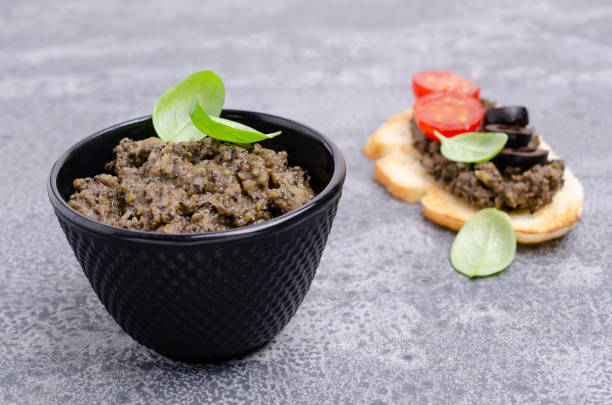
Discover a traditional dip 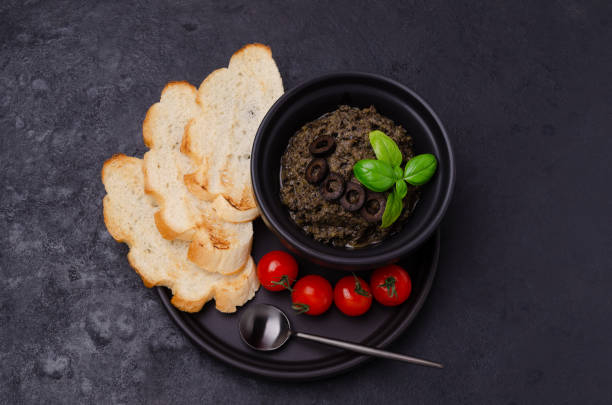
Discover a traditional dip -
One of the most delicious and savory vegetable recipes from Provence is ratatouille. With its emphasis on fresh vegetables from the garden, traditional French ratatouille recipes are easily envisioned as a farmer's or gardener's lunch. Ratatouille is a hearty vegetable stew made with garlic and flavorful herbs. The dish is made in durable earthenware and contains chopped tomatoes, eggplant, zucchini, peppers, and onions that have been cooked for up to two hours with herbs including parsley and thyme.
Ratatouille can be served as the main meal or with fish and meat dishes when it's time to dine. A steaming dish of ratatouille is comforting and fragrant during the blustery winters in Provence. For a cooling lunch or dinner during the hot summer months, it can be served chilled with a sprinkle of reviving delicate herbs. This meal is made into a tian when it is spiraled and dusted with cheese and/or breadcrumbs.
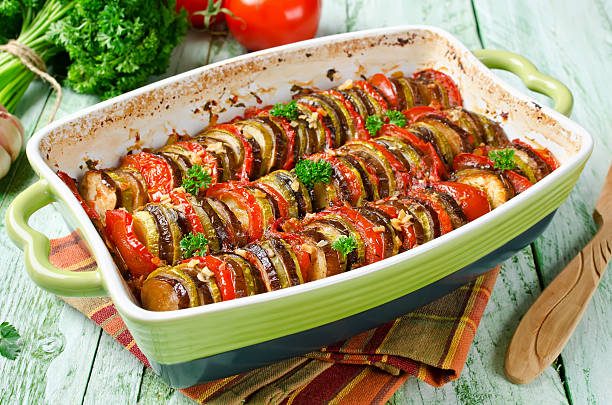
Ratatouille 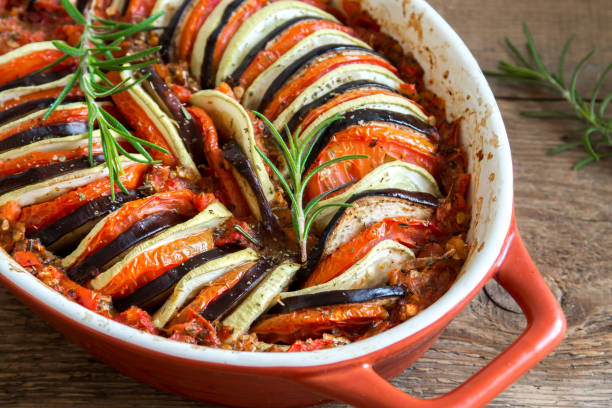
Ratatouille -
Cod is a common food in coastal areas all around the world. Many cultures use a substantial amount of salt to cure this fish, which must be removed before cooking, to preserve the fillets. Because the conservation method was formerly crucial to preserving the fish's quality until it could be transported or sold at the market, preserved fish were more prevalent than fresh fish. The fishing villages around the Mediterranean coast, particularly those in Provence and the surrounding Languedoc, have historically engaged in this custom.
One of the most comfortable foods from Provence, salt cod is the hero of brandade de morue, a dish with a strong scent. The first forms of the dish brandade de morue had milk and garlic, claims Regions of France. In more contemporary versions, potato puree has been added. Everything is combined like a mousse, cooked as a gratin, topped with grated, salty cheese, and baked until it is browned.
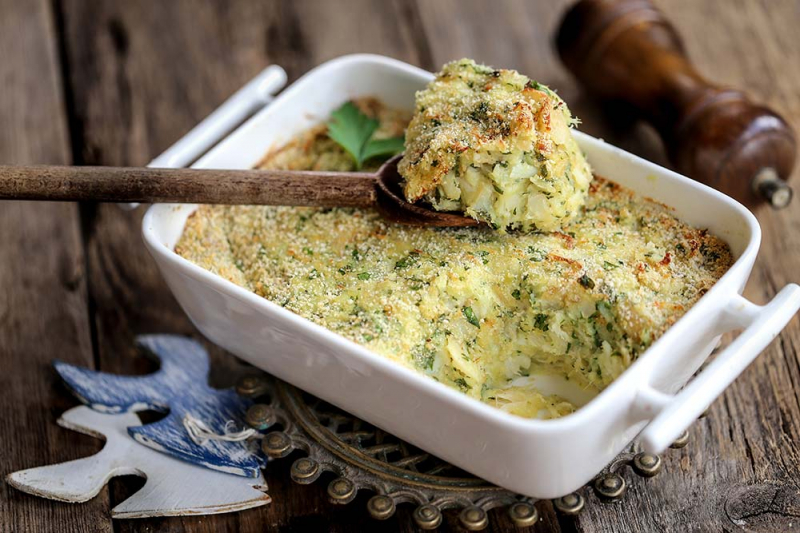
Brandade de morue 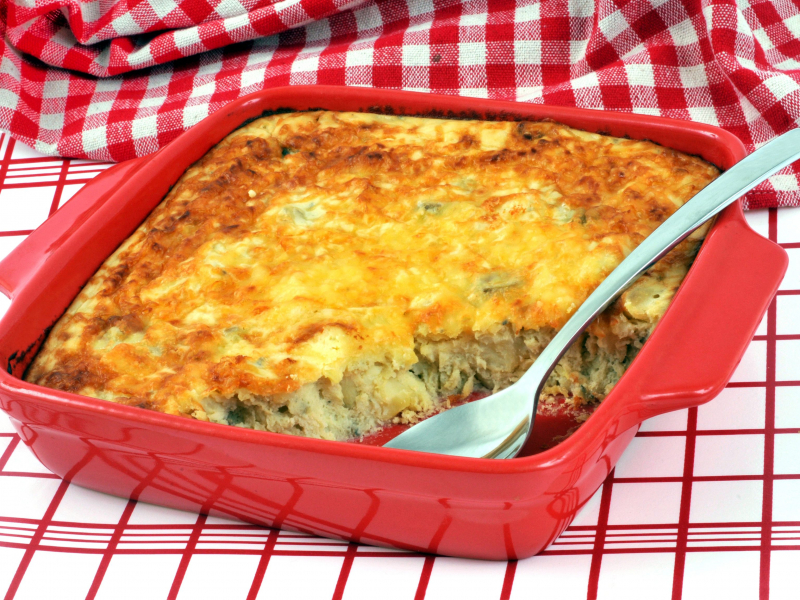
Brandade de morue -
Nice, the hub of the French Riviera, is a historic town on the coast of Eastern Provence. It features one of the most lively street scenes in the area, plenty of ritzy splendor, old-town charm, and beach vibes. It's the kind of place where people enjoy getting out and socializing while strolling. A hand-held slice of pissaladière onion tart is the solution for hungry folks who don't want to sit down for a complete meal.
This salty and savory tart is covered with caramelized onions, olives, anchovies, and herbs and has a bready crust resembling focaccia. Pissaladière can be found in "boulangeries and snack bars all throughout the Côte d'Azur", according to Lou Messugo. Slices of it can be consumed in a picnic-style setting, either hot or at room temperature. Pissaladière, a distinctive meal popular in Nice and coastal Provence, is sometimes compared to pizza but lacks sauce and cheese.
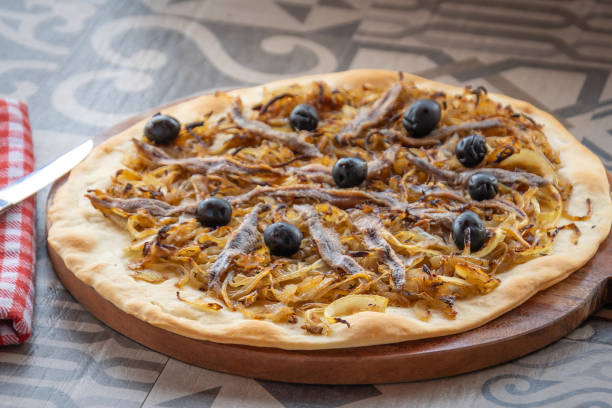
Savor pissaladière 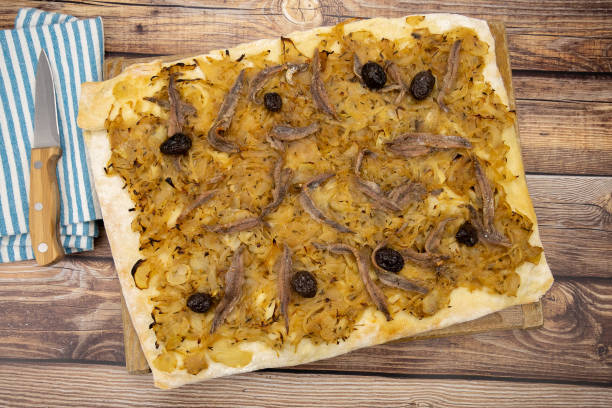
Savor pissaladière




















